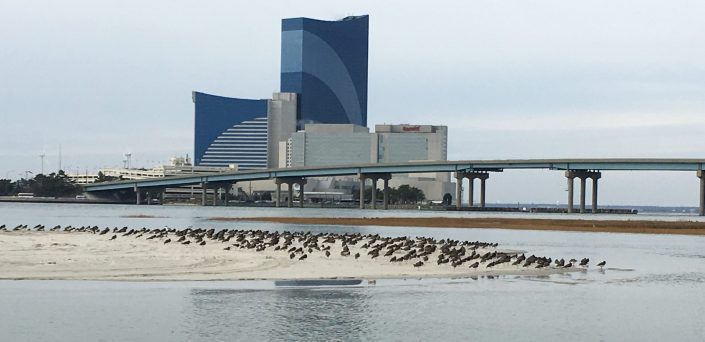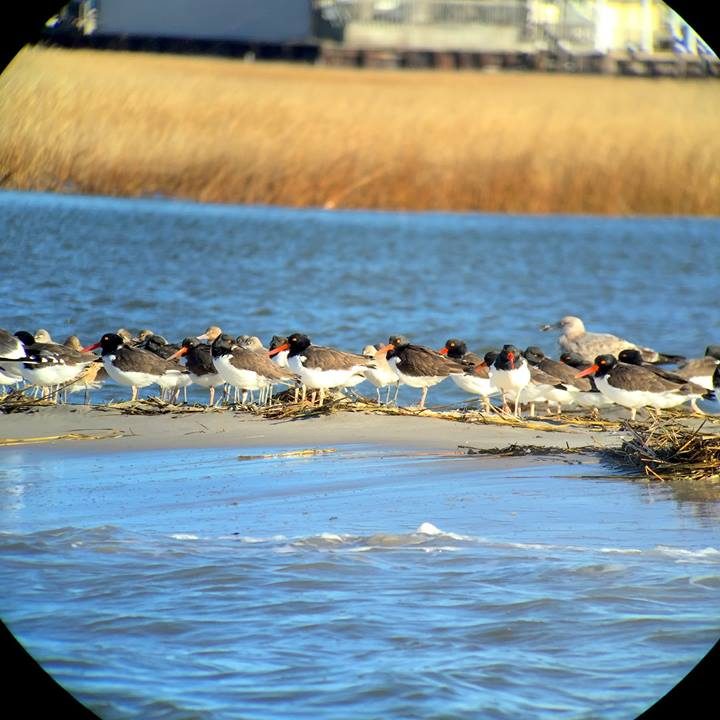CWF Assists the State with Wintering American Oystercatcher Survey
by Todd Pover, Senior Wildlife Biologist

Most people are surprised to hear that American oystercatchers are present in New Jersey in the winter. They usually associate the charismatic shorebird as a breeding species here. Our state’s wintering oystercatchers, a combination of breeders from further north and our own, are at the northern extent of the Atlantic coast wintering range.
Annual winter surveys have been conducted in New Jersey in recent years – at high tide they form large roost flocks in inlets, so they are more easily counted. Surveys are done on the ground over a 10-day period in December and this year a half-day aerial count via helicopter was also utilized to better inform the survey. This winter’s survey was organized and directed by the state’s Endangered and Nongame Species Program with assistance from partners, including CWF, and volunteers. CWF Biologists Meghan Kolk and Meaghan Lyon conducted several ground surveys and Todd Pover was one of three surveyors who flew the aerial survey.
As many as 1,000 individual oystercatchers can be present in the late fall/early winter along the Jersey Shore, primarily in the southern region, although counts were on the lower side this year with only 500-600 being tallied. The lower count was almost entirely the result of a very small flock within Hereford Inlet, which typically has one of the highest winter concentrations. Oystercatchers will shift further south along the Atlantic Coast during the winter when persistent extreme cold weather arrives in New Jersey, as it limits food availability. However, the weather was relatively mild leading up to the survey, so it isn’t clear why the numbers were lower this year.

Discover more from Conserve Wildlife Foundation of NJ
Subscribe to get the latest posts sent to your email.